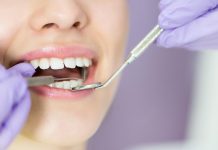
(AscendHealthy.com) – There’s little in this world that we absolutely cannot live without, but water sits on the top of the list. Some of us could be drinking from contaminated supplies without even knowing it, slowly poisoning ourselves and our families every time we turn on the faucet. Water doesn’t need to come from Flint, MI to suffer from poor quality; areas all over the country are facing similar threats, and many residents aren’t even aware there’s a problem. Here are the facts.
Here’s How Your Water Could Be Making You Sick.
Odorless, Flavorless Threat
Hazardous water isn’t always discolored and foul-tasting; according to the CDC, it can appear clear and flawless and still contain dangerous amounts of lead. We take for granted the water coming out of our taps is safe for drinking and cooking — and while most of us do have safe, clean tap water, many people don’t. What’s worse is that a good number of these people might not even be aware of it.
A report recently released by SciLine details the severity of the problem. According to the report, about one-third of US households get their water through lead service lines. Many additional homes have lead in household pipes, fixtures or solder. The only way to know whether the water coming from a particular tap contains lead is to test for the metal’s presence.
Effects of Lead on the Body
Lead can cause several health issues, which can vary depending on the individual and level of exposure. Pregnant women, unborn fetuses and children under six years old are most at risk of suffering its health effects. According to the WHO, children absorb 4 to 5 times more ingested lead than adults, with absorption rates being highest in children whose iron, calcium or phosphorus levels are low.
Signs of lead poisoning can initially be broad and vague: headaches, irritability, poor attention span, and memory impairment. Symptoms may also include muscle tremors, stomach cramps, kidney damage, altered mental state and hallucinations. With long-term exposure, the sufferer might start experiencing joint pain, peripheral neuropathy, fatigue, sleeplessness and gastrointestinal distress. Some sufferers may become anemic. Over time, lead exposure may cause cancer in humans.
Children chronically exposed to lead often suffer stunted growth. Several studies also show a connection between high levels of lead and lower childhood I.Q. scores. Fetuses exposed to low levels of lead in the womb have about a 10% risk of birth defects, including webbed toes, hydrocele and benign tumors called angiomas. Higher lead levels substantially increase the risks.
Taking Safety Measures
Several factors can go into how likely a source is to contain lead. The EPA recommends contacting the local water utility about municipal and at-home testing. Enquiring about whether the service line contains lead can also be helpful, as can requesting a local Consumer Confidence Report.
If household water does contain lead, users can take a few measures to stay safe:
- Run water for a short amount of time to clear lead accumulation before using for drinking or cooking.
- Use cold water; hot water leaches out more contaminants from the pipes.
- Clean the aerator, or the little screen in the faucet, regularly. Sediment that gets caught in it may contain lead.
- Know about any local construction that could disturb service lines and release lead into the water.
- Use a good filter that specifically removes lead and make sure to replace filters correctly. According to the DC Water Authority, only filters rated NSF 53 are effective at cutting out enough lead. Brita filters can tackle typical household levels, but Consumer Reports warns that excessive contamination may require a reverse osmosis system. Never attempt to filter hot water.
Keep in mind that lead content becomes more concentrated as water evaporates, so never attempt to boil lead away.
Our bodies need water every day to function properly, but we also need that water to be clean. While It’s safe to bathe and shower in lead-contaminated water, it’s never safe to consume. Always assume tap water contains lead unless the source specifically has tested clean, opting to drink and cook with filtered or bottled water instead if there’s any doubt.
~Here’s to Your Healthy Ascension
Copyright 2023, AscendHealthy.com




















